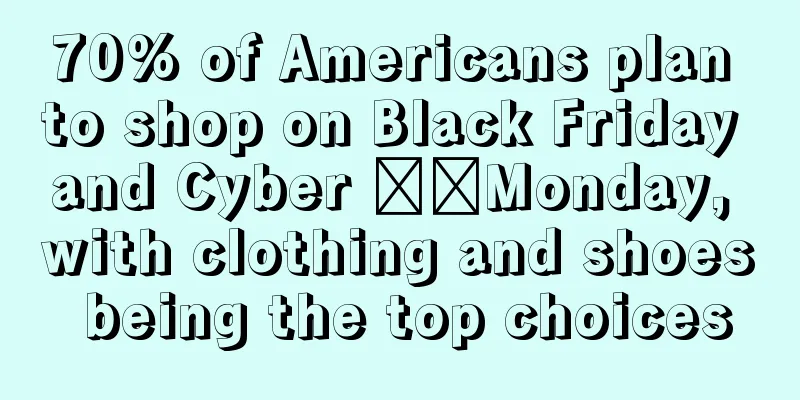The safest way to get reviews - build a review automatic marketing flywheel

|
The number of Chinese sellers on Amazon increases by 20%-30% every year, and this year in particular has seen the peak in the number of newly registered sellers on Amazon. Recently, market competition on Amazon has become increasingly fierce, and product homogeneity is serious, which has led many merchants to adopt the method of "brushing orders and reviews" to stabilize their rankings. Many people who do business on Amazon say that fake orders are a way to get killed, but there are also many sellers who think that not fake orders is a way to get killed. If you don’t fake orders, but others do, how can you compete? As we all know, traffic is particularly important for e-commerce, whether it is domestic or foreign. For Amazon sellers, the importance of reviews is self-evident. Buyer reviews have a direct impact on the exposure, traffic, ranking and conversion rate of listings. Therefore, obtaining high-quality buyer reviews when creating a product is a necessary condition for creating a hit. Build a Review automatic marketing flywheel through off-site marketing tracks The competition for traffic on the Amazon platform is becoming increasingly fierce, and the cost is getting higher and higher, so more and more sellers are looking to deploy off-site marketing. So how can sellers build a stable traffic moat through off-site channels? My answer is that sellers should plan off-site marketing as early as possible and build their own private domain traffic pool. Sellers can use relevant crawler software to track the off-site marketing tracks of competing products, learn and analyze the number of off-site traffic diversion websites for products, learn from the specific URLs, off-site traffic diversion copywriting and pictures of competing products, learn the off-site traffic diversion plans of excellent sellers, and then imitate competing products to create their own off-site marketing plans. How to create a private domain traffic marketing for cross-border e-commerce As the platform's traffic dividend is coming to an end, the cost of sellers' marketing is getting higher and higher. Branding has become the general trend of Amazon's operations, and Reviews are also moving towards privatization and compliance. What should sellers do without violating the policy platform? First: Build your own safe and reliable private traffic pool, do not pin your hopes of getting reviews on service providers, use multiple channels to attract traffic, and operate and reuse fans to the greatest extent possible. Building a traffic funnel through multiple channels outside the site, such as advertising and non-advertising, will allow sellers to establish a strong first-mover advantage in product promotion, brand promotion, differentiated marketing, etc. The three main channels for attracting traffic from outside the platform The first is advertising channels, including social platforms such as Facebook, Instagram, TikTok, and WhatsApp; The second is non-advertising channels, including KOL, blogs, forums, social marketing, etc.; The third is old customer activation, including old customers of Amazon, eBay and other platforms, email addresses, phone addresses, etc. After the omni-channel traffic of cross-border e-commerce sellers is introduced, through the marketing funnel of Flywheel, an intelligent management platform for fan management is provided. By building an efficient and reusable private domain traffic pool, the problem of low-cost customer acquisition and multiple marketing of sellers can be effectively solved. It can effectively promote the application and re-growth of brands on multiple platforms. Increase the review rate by 10 times by activating old customers Sellers are no strangers to the topic of old customer marketing. Many sellers have also used marketing methods such as after-sales cards. Recently, many big sellers who have been blocked or complained about are more or less related to this kind of problem. So is old customer marketing compliant? And what should we do? Regarding whether the old customer marketing is compliant, the seller must first have the user mindset of "boutique operation". In the old customer marketing, the writing of guidance emails, handling of negative reviews from buyers, and treatment of picky customers are all issues worth considering by sellers. Common methods for marketing to old customers: put an after-sales card in the package, guide the buyer to register by extending the warranty period, and obtain the buyer's email address for secondary marketing in the future; when releasing new products, use postcards to tap into potential new users and encourage old users to evaluate new products. Several key points for old customer marketing through after-sales cards : reject incentive-based forced guidance; real buyer feedback; remarketing reuse; permission-based email marketing; review filtering; brand website sedimentation. Implement data tracking for after-sales cards and make more adaptive adjustments based on data analysis. Postcard marketing: postcards do not need to be mailed with parcels; address marketing is used for users from platforms such as eBay, AliExpress, and Walmart; through online process guidance, unattended work can be achieved to improve work efficiency; fully customized brand independent stations can also be used for marketing purposes such as new product launches and promotions; guide buyers to conduct remarketing in private domain traffic pools.
What I want to share with you today is - Amazon sellers' product selection + operation statistics/data analysis/delivery plan excel visualization chart 1. Amazon product selection data visualization table 2. Amazon operation statistics/data analysis/shipping plan excel visualization chart |
>>: 42-day spiral hot-selling product creation planning reference case
Recommend
Amazon's major events in June! Both tax collection and discounts
The first half of this year has been a turbulent ...
What is Shiding Shield? Shiding Shield Review
"Shiding Shield" is an intellectual prop...
What is Baofu? Baofu Review
Baofu Network Technology (Shanghai) Co., Ltd. was ...
No solution! Behind this illegal account suspension is a big change
Recently, a large number of accounts have been ban...
Logistics companies have been hit by financial failures one after another! Many sellers’ accounts have been blocked inexplicably. Is this also related to delivery?
▶ Video account attention cross-border navigation ...
These 6 brands use it to improve customer experience and increase store conversion rates
Today I’d like to introduce a payment method: Ama...
What is DOTD (Deal of the Day)? DOTD (Deal of the Day) Review
DOTD ( Deal of the Day ) is a free flash sale even...
Amazon misjudged pesticide solution
In this period Friends who have been misjudged as...
Millennials warm up for holiday shopping in the US! Gift cards become the most competitive seed player!
According to a new Oracle Retail Consumer Survey, ...
Amazon update! New and more convenient monitoring function for the fourth ad slot
text At the end of last year, Amazon announced th...
Amazon Brand Registry Website Tool Usage and Instructions
The above is just a part of the content END...
What is Guangdong Xiaobinghuoren Network Technology Co., Ltd.? Guangdong Xiaobinghuoren Network Technology Co., Ltd. Review
Guangdong Xiaobinghuoren Network Technology Co., L...
What is Saudi Q Mark Certification? Saudi Q Mark Certification Review
The Saudi Quality Mark SQM belongs to SASO and mai...
Alphabet's third-quarter revenue exceeded $65.1 billion! A 14-year high!
It is learned that on October 26, Google's par...
eBay, Etsy and other six platforms set up 1099-K Fair Alliance to jointly resist the new tax law!
<span data-shimo-docs="[[20,"获悉,据外媒报道,近日eB...









